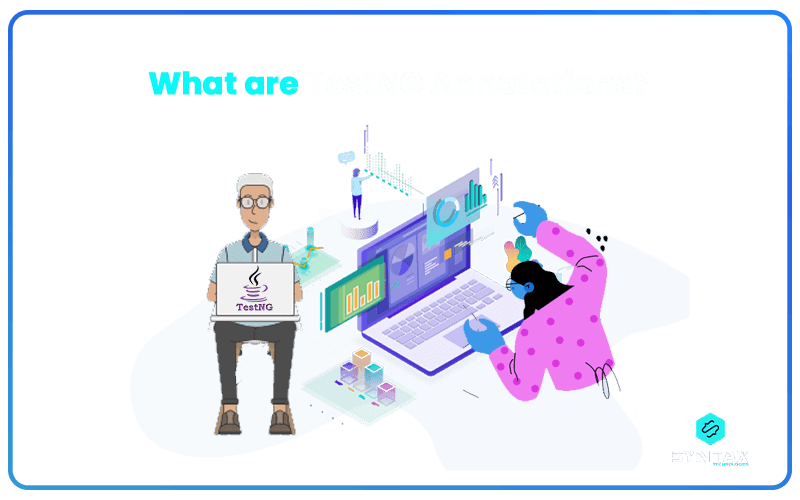Annotations in TestNG can be understood as specific pieces of code which are incorporated within the logic of a program with the intention of controlling the sequential execution of the test methods. In other words, TestNG Annotations help in deciding upon the sequence of the tests which are made to run. These annotations are extracted from Java language and are a crucial component of Test Next Generation (TestNG) which in turn acts as an automation framework, widely employed by Selenium.
For a more detailed understanding of Selenium as a predominant Test Automation Tool, refer to our blog on What is Selenium?
In this blog, we will look at the question of what are TestNG Annotations. Additionally, we shall also look at the TestNG Annotations Order as well as consider its benefits.
What are TestNG Annotations?
Annotations in TestNG have the purpose of controlling the next method which is supposedly the one to be executed next in the test.
The abbreviation ?NG? stands for Next Generation and TestNG itself is a test run automation framework. Annotations can be thought of as a comment on something which helps in specifying its meaning. The primary objective of TestNG Annotations is to make end-to-end testing easy.
The importance of including TestNG Annotions within your overall program logic can be understood by a simple above example.
For instance, you need to execute seven test cases and one method is written for each of the test case. At first, you simply use the main method and do not involve Annotations in TestNG. Now suppose, when you execute the program, five methods are executed successfully and the sixth one fails. What do you do?
You rectify the errors in the sixth method and you are seeking to execute only the sixth one as the first five have already been made to run. However, you cannot achieve this objective without the help of TestNG Annotations.
TestNG Annotations Order
TestNG Annotations in Selenium Webdriver does provide the option of using different annotations for the purpose of writing a good source test code. However, in the midst of so many options, there need to be some hierarchical order which will help TestNG to figure out the order in which the test annotations need to be executed. This is referred to as the TestNG Annotations Order of Execution. Let us have a look at this sequence.
TestNG Annotations in Selenium Webdriver: Benefits
Selenium is one of the foremost Test Automation Tools of choice. However, Selenium by itself does not facilitate the generation of reports after the execution of a test. By way of using TestNG in Selenium, one can achieve this objective. Besides this, there are certain other notable advantages of using TestNG Annotations in Selenium Webdriver.
- It helps in the generation of a detailed and comprehensive test report which provides all the information pertaining to the number of test cases executed, the number of passed and failed test cases, as well as the number of skipped ones.
- It provides for the easy grouping of multiple test cases by using the testing.xml file. Moreover, one can prioritize the execution of test cases.
- It provides for cross-browser testing.
- TestNG Annotations can provide for the execution of the same test case, multiple times by making use of the keyword, ?invocation count?.
- Annotations in TestNG are easily comprehensible.
- The TestNG Automation Framework can be integrated with tools like Jenkins, TestNG Maven and so on.
- TestNG Annotations provide for easy coding of tests as it eliminates the need for a static main method in the tests.
Conclusion
It is quite evident that TestNG Annotations is extremely helpful for testers. TestNG Annotations in Selenium Webdriver make the test scripts more effective and manageable. It is possible to pass additional parameters to Annotations in Test NG and it allows for the detection of errors at compile time.
If you wish to understand the role of a Selenium Tester more closely, refer to our blog on ?Selenium Tester: A Role to Look Forward To?.
While there are a number of Automation Testing Tools available in the market, Selenium happens to be one of the prime tools of choice. Additionally, TestNG Annotations in Selenium Webdriver only help in rendering the tool more effective. If you happen to aspire for the role of a SDET, mastering the tool of Selenium is an important component of the same. We, at Syntax Technologies, provide you with an amazing opportunity to cultivate skills at par with the position of a SDET. Check out our SDET Automation course.


